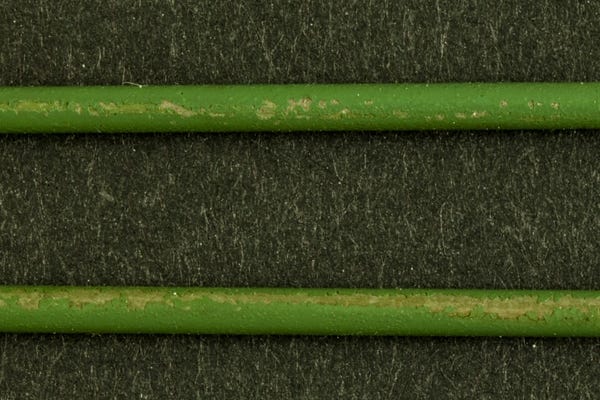FDA Warns About Deadly Device Coatings Problems
November 23, 2015
Coating adhesion problems related to guidewires and other devices apparently aren't going away, if a Monday safety communication out of FDA is any indication.
Chris Newmarker
|
Some failing wires experience PTFE delamination. (Image courtesy of Surface Solutions Group) |
FDA is warning health providers of serious adverse events related both the hydrophilic and hydrophobic coatings used on guidewires and a host of other intravascular procedure devices.
The medical device industry has already been aware of problems with flaking polytetrafluoroethylene (PTFE) coatings since the EPA required a reformulation to remove the suspected carcinogen perfluorooctanoic acid (PFOA).
But the FDA safety communication, released Monday, is broader in scope and does not pin the blame on PTFE (which DuPont still markets as Teflon for non-medical purposes).
"The FDA now has enough of an understanding of the issues to communicate publicly and to provide recommendations to mitigate the risk of coating failure associated with the use of hydrophilic and/or hydrophobic coated medical devices," said FDA spokeswoman Deborah Kotz.
The FDA safety communication covers hydrophilic and/or hydrophobic lubricious coatings including not only PTFE but also polyvinylpyrrolidone (PVP), silicone, and more.
It noted 11 recalls since January 1, 2010, and 500 medical device reports (MDRs) since January 1, 2014, involving coatings that peeled, flaked, shed, delaminated, or sloughed off.
For example, Covidien (now part of Medtronic) issued a voluntary recall of 650 of its Pipeline embolization devices and Alligator retrieval devices last year after internal testing revealed coating delamination. FDA also previously announced Class I designations involving coated guidewire recalls at Medtronic and Medline.
Out of the 500 MDRs, 11 described patient deaths, with nine actually attributed to flaking coatings. In the nine cases, embolization of coating particles from devices during heart and brain catheterization procedures caused blood vessel occlusion. Such occlusion helped cause fatal heart attacks and bleeding inside the brain, according to FDA's review of published literature.
The majority of the recalls and MDRs involved guidewires, but FDA noted recalls and problems with coatings on other types of devices including sheaths, retrieval devices, and embolization device delivery wires used in the vasculature.
FDA suggested the problem could be worse than reported. Says FDA: "It may be difficult for clinicians to associate these adverse events with malfunction of the coating; instead, they may mistakenly attribute the adverse events to other procedural complications or patient co-morbidities."
As for the cause, FDA described it as "multifactorial," involving a range of factors including device design, device manufacturing, and use. FDA has not yet concluded that any specific manufacturer or brand is higher risk than others.
For now, FDA is recommending that health providers take a number of steps:
Awareness that many devices are designed, labeled, and indicated for specific uses. (Medical device companies' off-label promotion of devices has become a major issue in the U.S., with some industry executives even facing criminal charges.)
Following device manufacturer's instructions for proper device storage.
Ensuring sufficient room for one device to pass safely within another when using two devices together, such as when a catheter is used with an introducer sheath.
Following manufacturers' preconditioning steps, when applicable.
Using caution when running these devices through needles, metal cannulas, stents, or other devices with sharp edges, or through tortuous or calcified blood vessels.
Awareness that bending, twisting, or other shape alterations may compromise coating integrity, and that such damage may not always be be noticeable to the naked eye.
Considering device replacement if the device does not move freely, perform as expected, or is visibly kinked or otherwise damaged.
Learn more about cutting-edge medical devices at BIOMEDevice San Jose, December 2-3. |
Chris Newmarker is senior editor of Qmed and MPMN. Follow him on Twitter at @newmarker.
Like what you're reading? Subscribe to our daily e-newsletter.
About the Author(s)
You May Also Like



.png?width=300&auto=webp&quality=80&disable=upscale)